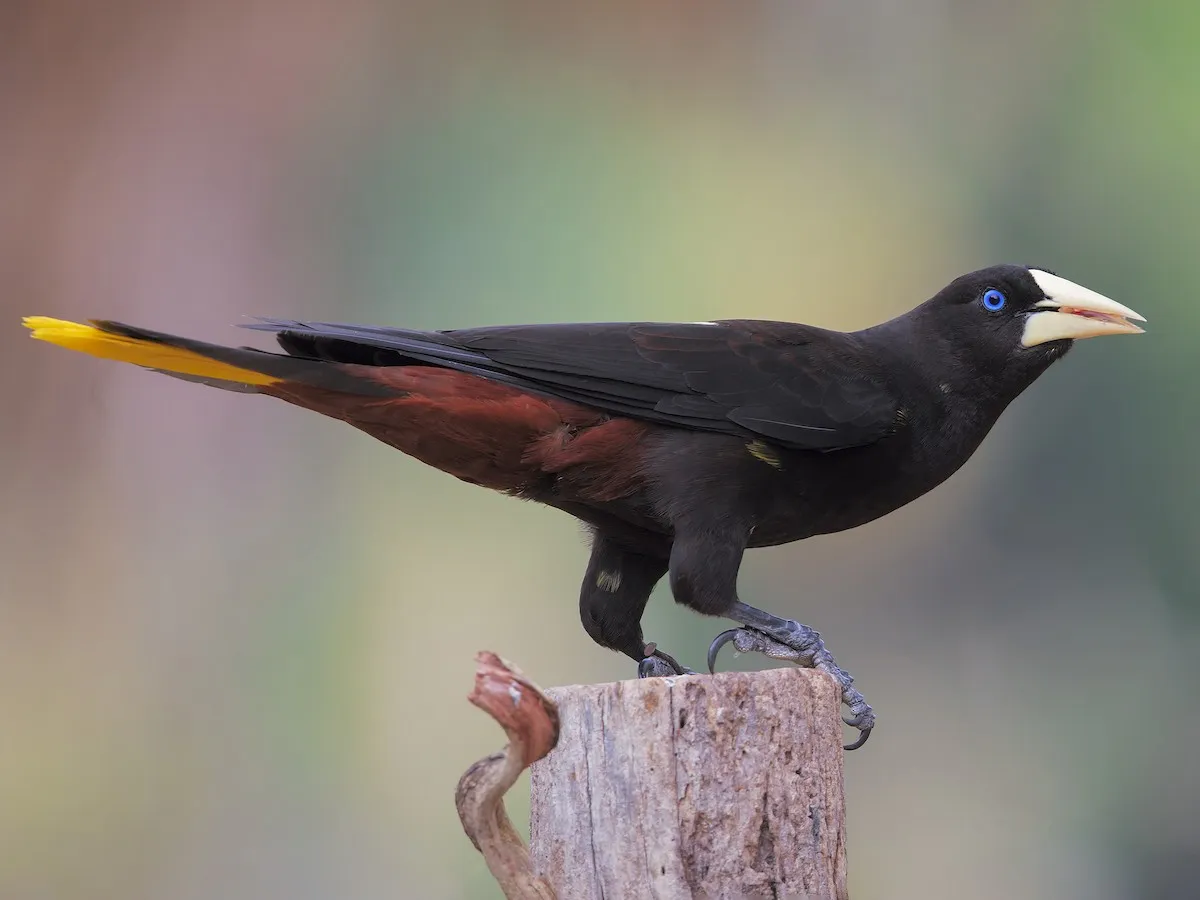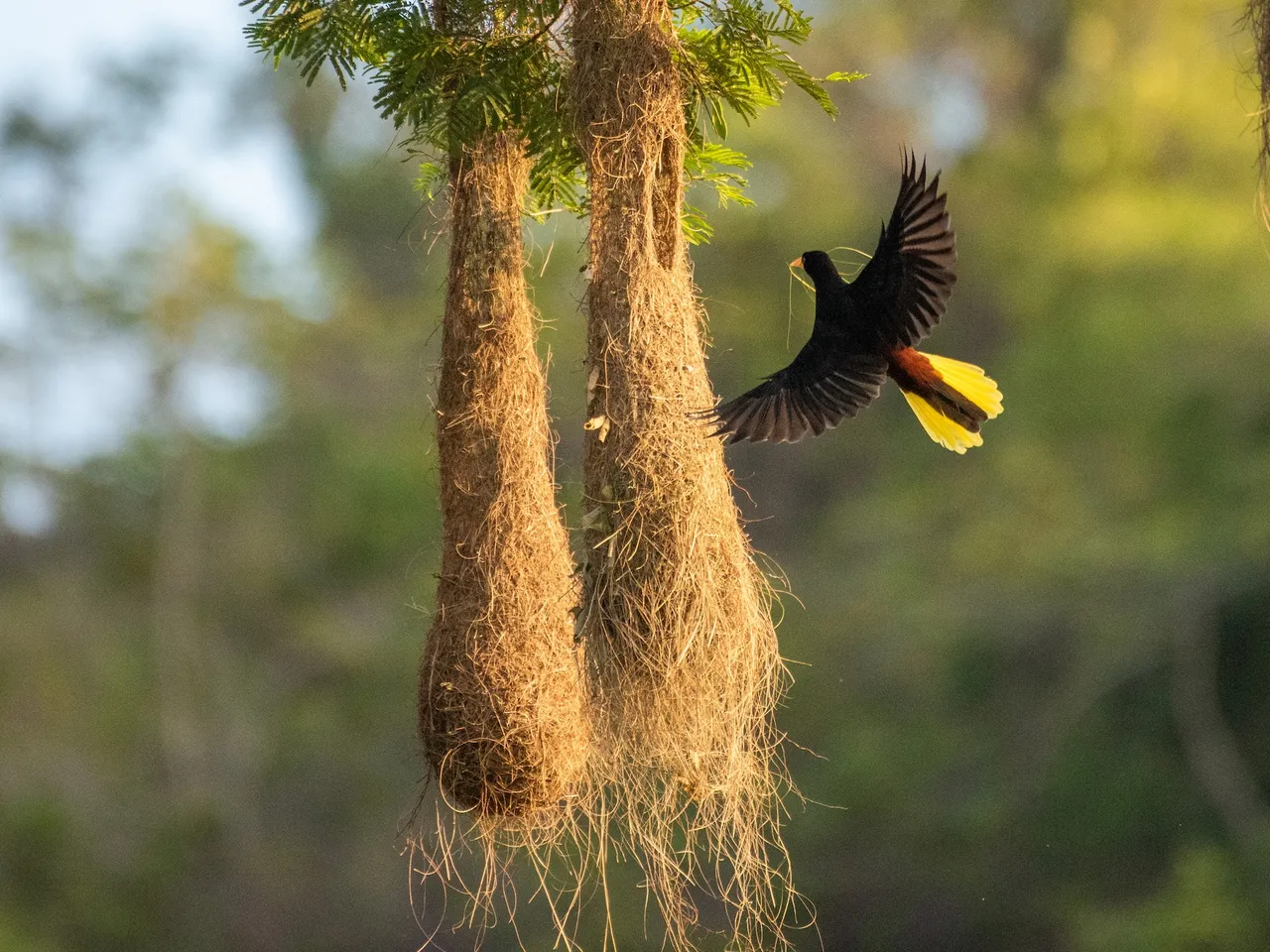Hola amigos amantes de la naturaleza, en esta ocasión les traigo en video a la Oropéndola Crestada (Psarocolius decumanus) también conocida como Conoto negro, un ave que siempre me ha llamado la atención, pues su tamaño, sus colores y su canto se distingue de todas las otras aves de la zona. Inesperadamente llegaron cuatro aves a mi balcón para brindarme un espectáculo, inmediatamente tomé la cámara y empecé a grabar.
Hello friends nature lovers, this time I bring you a video of the Crested Oropendola (Psarocolius decumanus) also known as Black Conoto, a bird that has always caught my attention, because its size, colors and song is distinguished from all other birds in the area. Unexpectedly four birds came to my balcony to give me a show, I immediately took the camera and started recording.
Me pareció interesante como se turnaban para alimentarse, parecía una familia, seguramente el padre la madre y dos pichones, pues unos eran ligeramente más pequeños. Según Wikipedia en una colonia puede haber entre 15 a 30 hembras y solo unos 3 o 4 machos. Cada hembra pone dos huevos.
I found it interesting how they took turns to feed, it looked like a family, probably the father, the mother and two chicks, as some were slightly smaller. According to Wikipedia in a colony there can be between 15 to 30 females and only 3 or 4 males. Each female lays two eggs.
De esta especie conservo unas plumas en mi habitación, pues en una ocasión me encontraba observándolas en uno de los arboles cercanos y una de ellas salió volando en dirección hacia una casa confundida por el reflejo de una ventana ahumada y se estrelló contra el vidrio. Inmediatamente salimos a la calle a ver en qué estado se encontraba y la subimos a nuestro apartamento, pero no hubo nada que hacer para salvarla, el ave tenía un derrame interno, se podía ver su sangre que curiosamente era negra o azul muy oscuro. Fue un acontecimiento lamentable.
I keep some feathers of this species in my room, because on one occasion I was watching them in one of the nearby trees and one of them flew towards a house confused by the reflection of a smoked window and crashed against the glass. We immediately went out to the street to see what state it was in and took it up to our apartment, but there was nothing we could do to save it, the bird had an internal spill, you could see its blood which curiously was black or very dark blue. It was an unfortunate event.
Esta ave se encuentra distribuida en prácticamente todos los países de Suramérica, a excepción de Chile y Uruguay. Se alimentan de frutas, néctar e insectos, los machos tienen una cresta que no es muy visible, al parecer la despliegan durante el cortejo. Sus ojos son azules y tanto las hembras como las machos poseen el plumaje del mismo color, son negros con las plumas de su cola de color amarillo intenso, sin embargo la hembra es de color más opaco. Su canto es sumamente llamativo pues se oye como algún sonido mecánico, que hace pensar en el arranque de un pequeño motor. Esto es lo que más me llama la atención de esta ave. A continuación les dejo un video en donde pueden escucharlo.
This bird is distributed in practically all South American countries, with the exception of Chile and Uruguay. They feed on fruits, nectar and insects. Males have a crest that is not very visible, apparently they display it during courtship. Their eyes are blue and both females and males have the same color plumage, they are black with intense yellow tail feathers, however the female is more opaque. Their song is extremely striking because it sounds like a mechanical sound, which makes you think of the start of a small engine. This is what strikes me most about this bird. Here is a video where you can listen to it.
Otro aspecto curioso de esta ave es como construyen sus nidos, parecen bolsas que cuelgan desde arboles sumamente altos, por lo general arboles con poca vegetación, prefieren arboles de ramas secas, pues seguramente el acceso a los depredadores más complicado en este tipo de árboles.
Another curious aspect of this bird is how they build their nests, they look like bags hanging from very tall trees, usually trees with little vegetation, preferring trees with dry branches, as access to predators is probably more complicated in this type of trees.
Gracias por su atención espero les haya gustado conocer acerca de esta interesante ave.
Thank you for your attention, I hope you enjoyed learning about this interesting bird.

